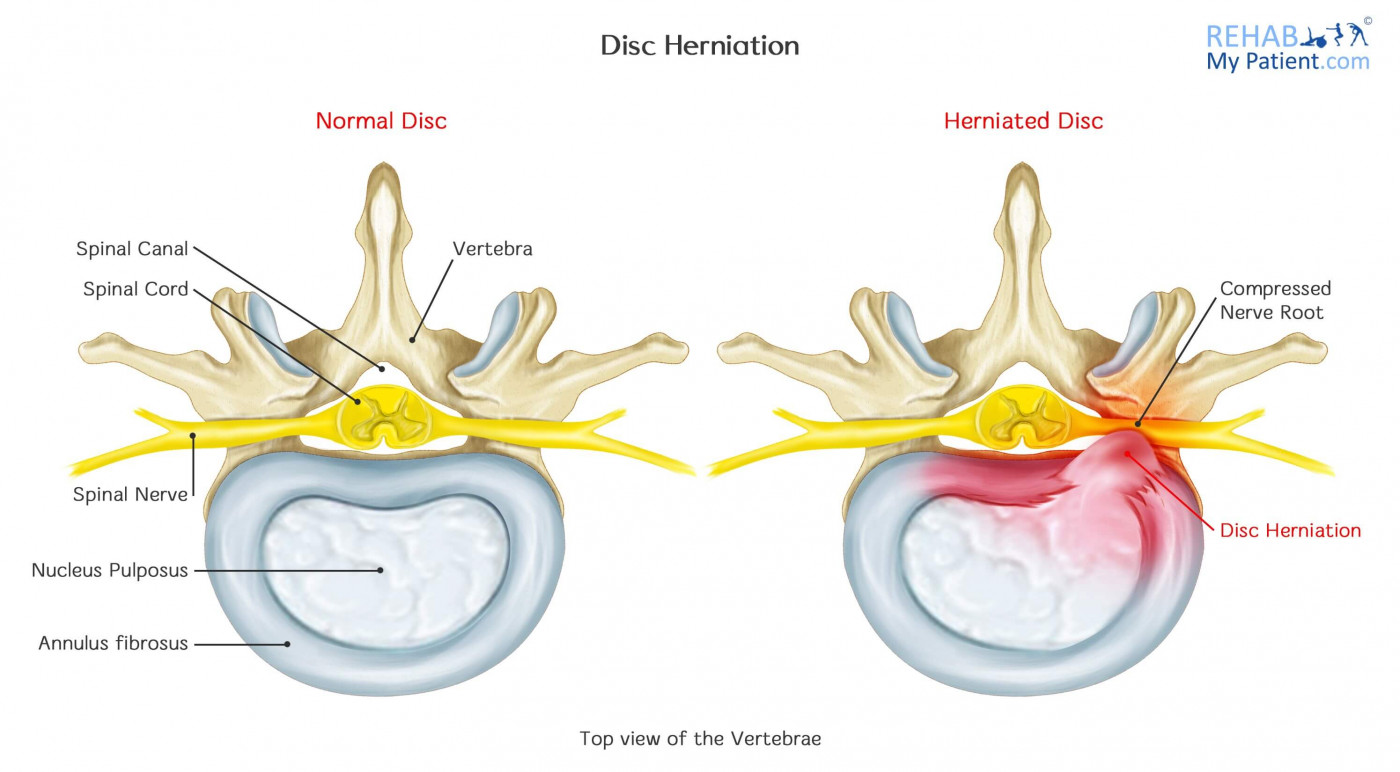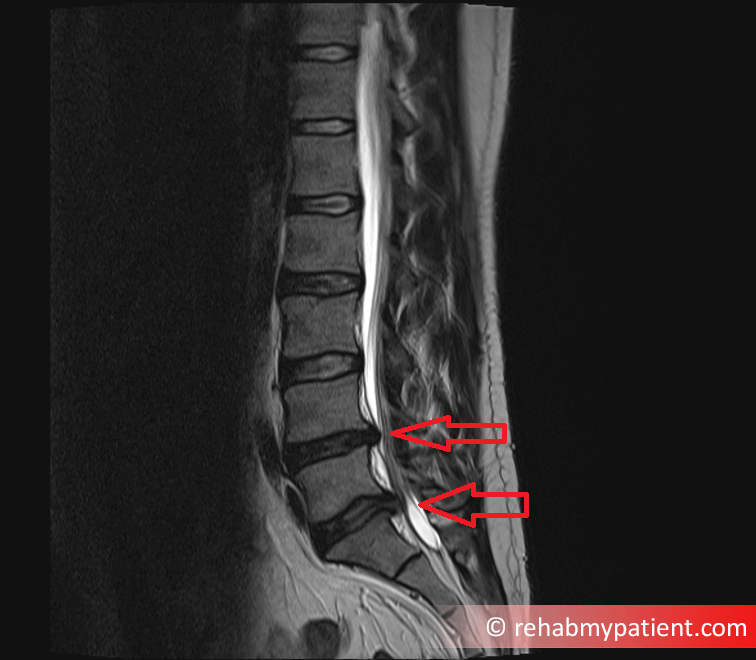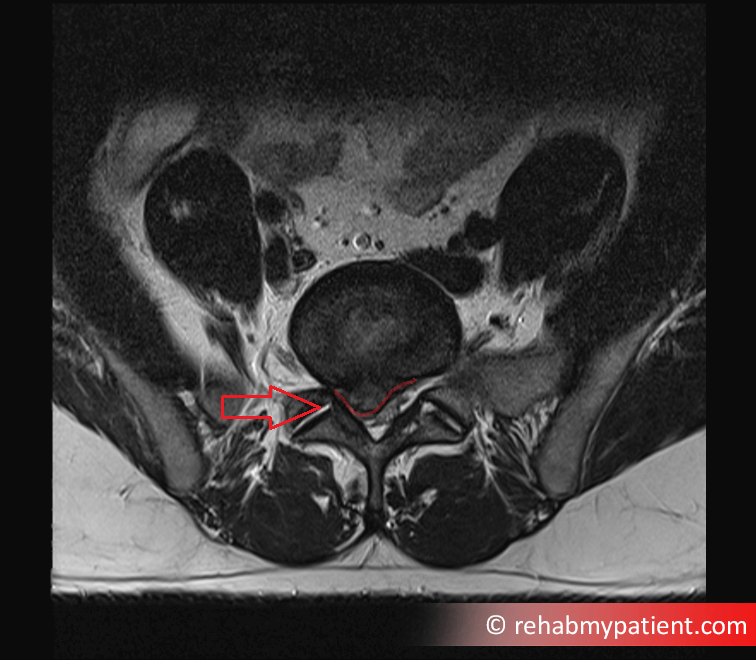Disc Herniation
Posted on 24th Jul 2017 / Published in: Lumbar Spine , Thoracic Spine , Neck

Around 80% of the population will at one time or another suffer from lower back pain. Pain can range from severe to mild and be long-lasting or short-lived. Regardless of how the pain happens, lower back pain makes it quite difficult to maintain everyday activities like you once did. So it’s very important to follow the advice of your doctor/therapist and resolve the problem. One of the more common causes of lower back pain is a disc herniation, sometimes known as a “slipped disc” or “disc prolapse”.
Disc Herniation Anatomy
The spine is composed of a number of small bones, referred to as vertebrae, which are all stacked one on top of the other. Ligaments, nerves, muscles and discs are all additional components of the spine.
Each vertebra connects to create a canal that shields and protects the spinal cord. It is composed of three distinct sections creating natural curves in your back: chest area (thoracic), curves of the neck area (cervical) and lower back (lumbar). The lower part of the spine is composed of vertebrae fused together (sacrum and coccyx). Every spine should have natural curves in it, the backward curve in your lower back is known as lordosis. Your upper back curves forwards and this is known as a kyphosis, and in your neck the curve is backwards and again known as lordosis.


An MRI scan showing two large disc herniations at L4/5 and L5/S1

An MRI scan transverse image showing the large disc herniations at L5/S1
Spinal nerves travel along the spinal canal to carry messages between the muscles and the brain. The nerves will branch out from the spinal cord out of the vertebrae openings.
The disc herniates when the jelly-like center presses against the outer ring. When the disc is injured or degenerate, the nucleus can end up squeezing its way completely through. Once the disc is bulging out of the canal, it causes pressure on the nerves and leads to pain. Since the disc herniation in the lower back will often place an undue amount of pressure on the nerves that lead to the foot and leg, pain will often occur in the buttock and radiate down the leg. The condition will often occur when bending forwards, but also lifting, or twisting while lifting.
How to Treat a Disc Herniation:
- Medication
Countless types of medication can be used to help alleviate pain and inflammation. Acetaminophen and aspirin will help relieve pain without having to worry about a number of harmful side effects. Non-steroid anti-inflammatories like naproxen and ibuprofen reduce swelling and pain.
- Physical Therapy
Physical therapy can encompass heat, massage, ice, electrical stimulation and ultrasound. Active therapy involves strengthening, stretching and cardiovascular exercises. To help relieve pain, use exercise to restore strength and mobility to the lower back.
- Braces
Braces tend to be used quite often. One of the most common is that of the corset braces that surrounds the stomach and the back. Even though they might not always be helpful, some people find that they feel more comfortable and stable when they are using one of the braces. Typically use a brace or back support when lifting, but do not wear it all the time as it can lead to weakness in your abdominal muscles.
Tips:
- Avoid repetitive forward bending
- Maintaining a healthy weight will help to alleviate some of the stress placed onto the lower back.
- Good posture is crucial to avoid any future problems with the back.
- Eliminating nicotine and smoking will help prevent increased aging of the spine.
- Combine aerobic exercise to help make sure the muscles in the abdomen and back are flexible and strong.
- Avoid sitting for long periods of time – get up and move around every 20-30 minutes.
- If you need to bend down to pick up a heavy weight, bend your knees as far as possible to minimise strain on your lower back.
Cold Application
This can be achieved with the use of an ice pack of pack of frozen peas. Use them over your lower back wrapped in a tea towel, for 5-10 minutes three times per day. This is effective in reducing the pain and inflammation of the neck muscles and joints.
Heat Application
Applying a hot water bottle wrapped in a towel, or a wheat bag over your lower back has been found to be effective in reducing pain, decreasing muscle stiffness, improving flexibility, and decreasing disability. Use it for 20 minutes up to three times per day.
Sign UP
Sign up for your free trial now!
Get started with Rehab My Patient today and revolutionize your exercise prescription process for effective rehabilitation.
Start Your 14-Day Free Trial